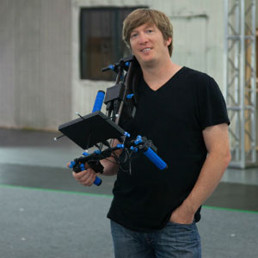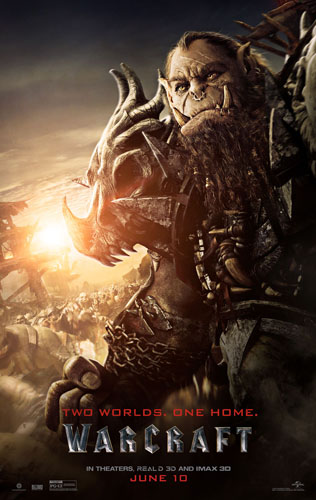One of the most anticipated movie of 2016 that’s based on Blizzard Entertainment’s game, Warcraft that’s set to hit the big screens on 10 June, tells the story much before World of Warcraft takes place. Since the game showcases the worlds of orc and human clash, the question arises how did director Duncan Jones and his collaborators craft a race of orcs, taller and more muscle-bound than humans, and feature them not just in ferocious mega-battles, but also reveal their more subtle and nuanced emotional lives?
The answer is quite simple. Visual effects and use of computer generated images helped the director and the production house to bring this game story arc to life. And this couldn’t have been possible without the use of motion capture and virtual production tech. Animatric was roped in to supply camera tracking, motion capture suit and simulcam technology that enabled complicated and realistic on-set performances from the orc performers. This data in turn aided visual effects supervisor Bill Westenhofer and VFX studio ILM easily transfer those performances into the digital realm, creating the photoreal orc ‘digi-likenesses’ witnessed in the final film.

“Warcraft was the largest virtual production Animatrik has ever been involved with,” says Animatric, president and CTO Brett Ineson. ”The production had eight different stages over five months of shooting. Some were 300 feet in length, and there were even outdoor stages where the team had to film in the rain!”
Compositing orcs in real-time
Animatrik delivered several motion capture services throughout production. Ineson explained that Animatric supplied tracking cameras, tracking weapons and props, all were integrated with live action sets and live action actors, which were later integrated with the CG sets and actors.
“The idea was that as we were filming you could see everything happening through the eyepiece of the movie camera – all the backgrounds, orcs and creatures composited in real-time with our tracking tech.”
Animatrik deployed two kinds of motion capture camera technologies – NaturalPoint and Vicon cameras and a SolidTrack system.
The first tech setup was coined ‘outside in’, and relied on capturing the motion of performers in motion capture suits along with the main film camera. This provided a real-time simulcam composite of the characters and their backgrounds.
Integrating simulcam
There have been situations when no motion capture equipment were there on the set or where the cameras could not see the actors. So to solve that issue, Animatrik used an ‘inside out’ approach.
“We’d mount a small vision survey camera to the movie camera,” explains Ineson. “This camera would integrate with a system called SolidTrack, which would lock onto every pixel it sees and calculate its 3D position to the world around it. We could then work out the offset between that camera and the movie camera for the simulcam view.
“Having that simulcam view was so valuable for everyone on set,” adds Ineson. “It really helped with things like framing, since the orcs, for example, might be up to 12 feet tall. Knowing that on set meant the camera operator could re-position for the best angle.
The production house was able to shoot Warcraft as if it were a normal movie, thus drastically reducing the changes which were necessary on the back end.
The great outdoors
Outdoor shooting is part of the filming stage of most of the movies and can’t be avoided. But what’s challenging in a film like Warcraft that requires motion camera is the fact that the there’s no control over the environment.
However, Animatric overcame it by using active marker suits fitted with LED lights developed with Standard Deviation to achieve highly accurate motion capture. “Because of the outdoor sets, light pollution and rain, we needed to create LED suits for the actors to wear because we knew we would have trouble bouncing light from the camera to do a traditional motion capture,” says Ineson. “The LEDs are synchronised to pulse in time with the motion capture camera and therefore not impact on the main photography.
This not only allowed for much more precise outdoor performance capture but also added a more realistic performance from the actors themselves, who could more realistically place themselves into the scene.
 The subtlety of facial performance
The subtlety of facial performance
If we see the trailer, we can observe that orc’s facial expressions resemble that of the actors to some extent. To achieve those emotive performances, the on-set actors wore a helmet camera system developed by Technoprops, consisting of a pair of stereo cameras that delivered two streams of video. These cameras caught every nuance and subtle shade of emotion that passed across the actors’ faces as they performed.
“Animatrik’s role in the facial animation was in the post process tracking of the data that came off those cameras,” describes Ineson. “The stereo cameras meant we could track the data in 3D as opposed to 2D. We would track the facial marker set into 3D and then deliver that data over to the VFX vendor, in this case ILM who then worked with it in their their proprietary facial animation solver.”
Seeing the final result of the credible work pulled off by Animatrik, a happy Ineson expounds, “It was just so complicated. It’s one thing to capture performances but when you have nine orcs fighting nine humans with moving cameras and all that action happening, the fact that the cameraman could see this all in his camera in real-time, was so great.”
Not only was Warcraft an evolution of Animatrik’s craft, but it also helped the team make a major leap in the services the company now offers. For a movie like Warcraft a lot of R&D had to be involved as a lot of things had to be custom built and team Animatrik gave their 100 per cent and delivered their best.
Written by Charles Leavitt and Jones and produced by Legendary Pictures, Blizzard Entertainment and Atlas Entertainment, the movie is slated to hit theatres on 10 June.

